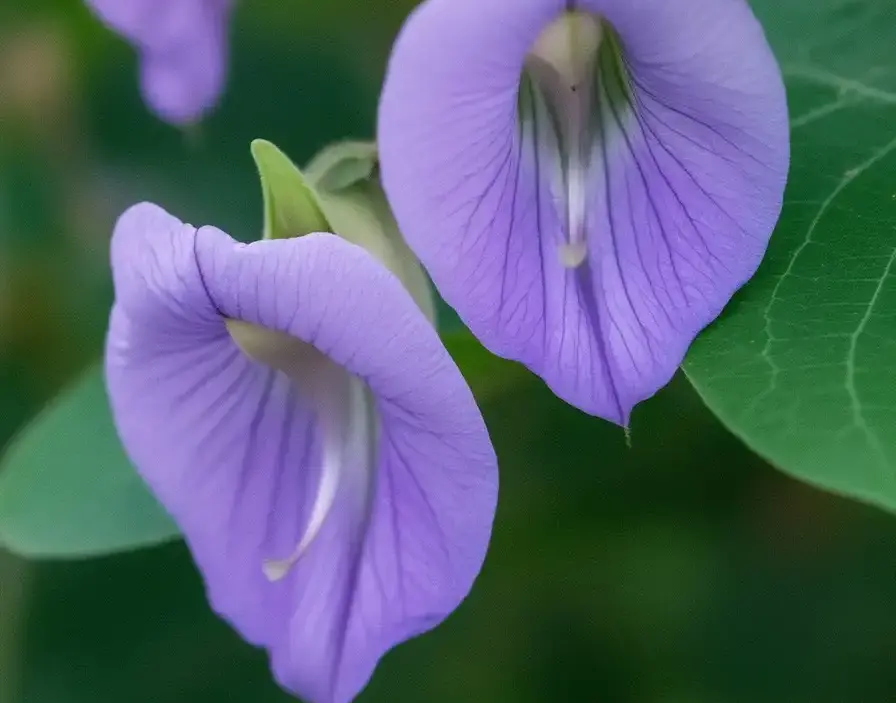Spurred Butterfly Pea (Centrosema virginianum) is a hardy, low-maintenance vine with purplish-blue blooms that attract pollinators—pair it with our 20 Best Full Sun Perennials for Low-Maintenance Gardens or 10 Best Drought-Tolerant Plants for an eye-catching display.
Spurred Butterfly Pea care is simple: water moderately, prune lightly, and propagate by seed or cuttings—check moisture tips in our 15 Best Walkable Ground Cover Plants for Garden Paths.
🌿 Love gardening inspiration? Follow me on Pinterest for bold plant ideas, tips, and seasonal color!
Table of Contents
Spurred Butterfly Pea Care Tips
Growing Spurred Butterfly Pea is surprisingly simple when you understand its natural preferences. This tough perennial vine thrives with minimal fuss, making it a favorite among gardeners seeking beauty with low maintenance.
🌿 Watering Needs
Spurred Butterfly Pea prefers moderate watering. In the first few weeks after planting, keep the soil consistently moist to help the roots establish. Once established, it becomes drought-tolerant, requiring watering just twice a week during dry spells. Always check the top inch of soil—if it’s dry, it’s time to water.
💡 Tip: Avoid overwatering. Well-drained soil is crucial to prevent root rot.
☀️ Sunlight Requirements
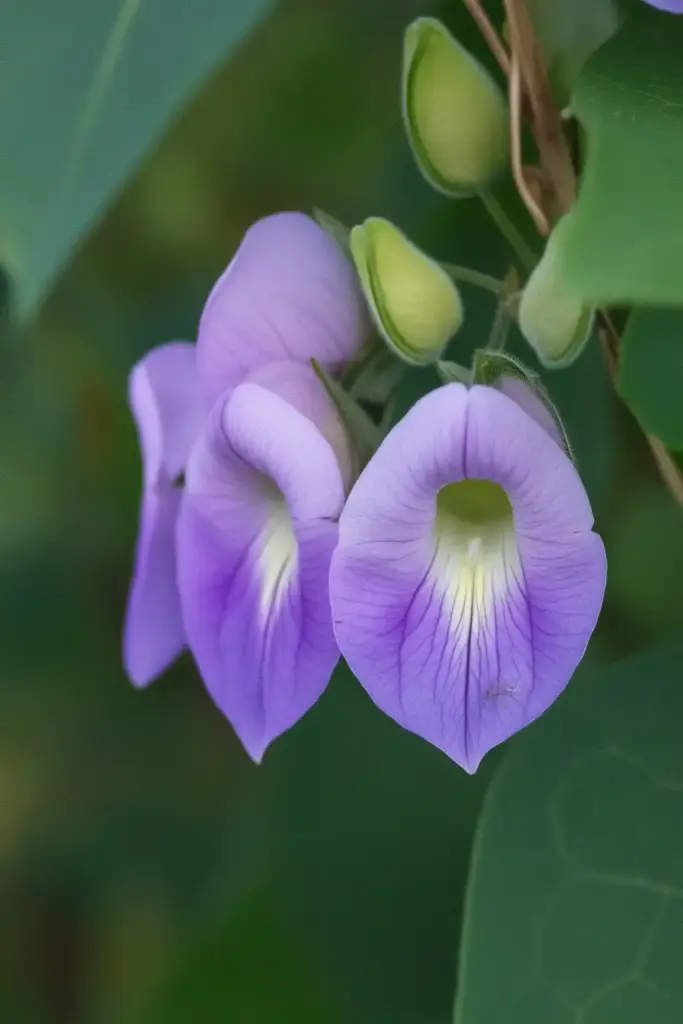
This vine is a sun-lover. For lush foliage and an abundance of blooms, give it full sun exposure—around 6 to 8 hours a day. However, it can still perform well in partial shade, especially in hotter climates.
🌞 Best placement: Train it along a sunny trellis, fence, or pergola for stunning vertical color.
🪴 Soil Preferences
The Spurred Butterfly Pea is quite adaptable but thrives in well-drained garden soil with a pH between 5.5 and 7.0. Sandy or loamy soils are ideal. If your garden soil is heavy clay, amend it with compost or sand to improve drainage.
🌱 Fertilizing Guidelines
This plant doesn’t demand much feeding, especially since it fixes nitrogen in the soil naturally. However, to encourage flowering, apply a balanced, all-purpose fertilizer once a month during the growing season. Avoid high-nitrogen fertilizers, which promote leaf growth over flowers.
✂️ Pruning and Maintenance
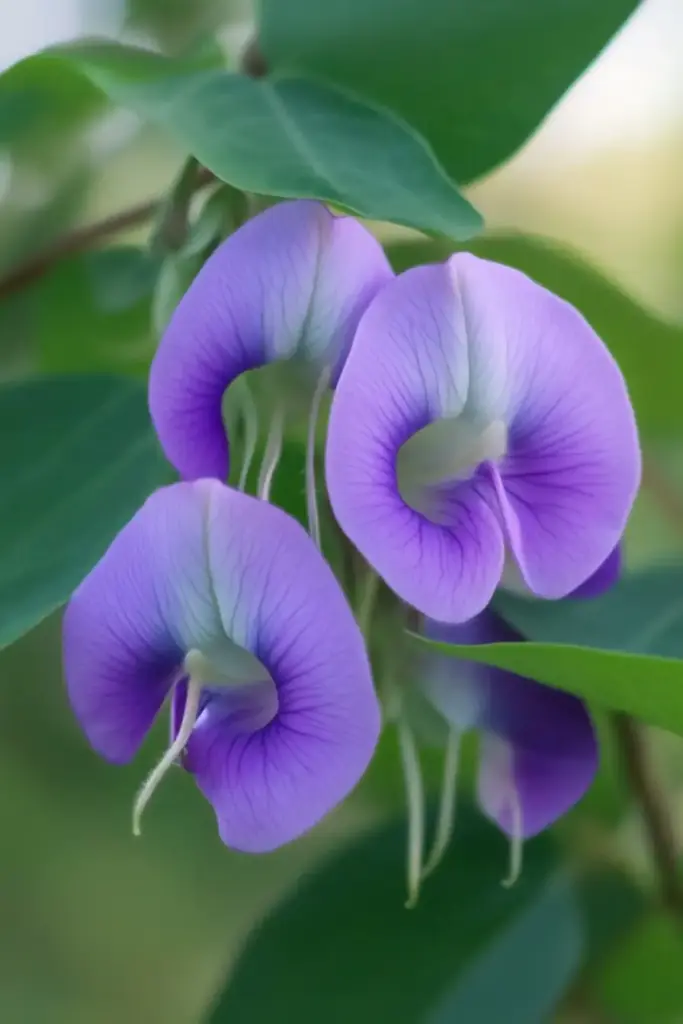
To keep your Spurred Butterfly Pea looking its best:
- Prune lightly to shape the vine and encourage bushier growth.
- Remove dead or weak stems in early spring.
- Cut back after flowering to tidy up the plant and stimulate new blooms.
✂️ Bonus: Pruning also prevents the vine from becoming too invasive.
How to Propagate and Transplant Spurred Butterfly Pea
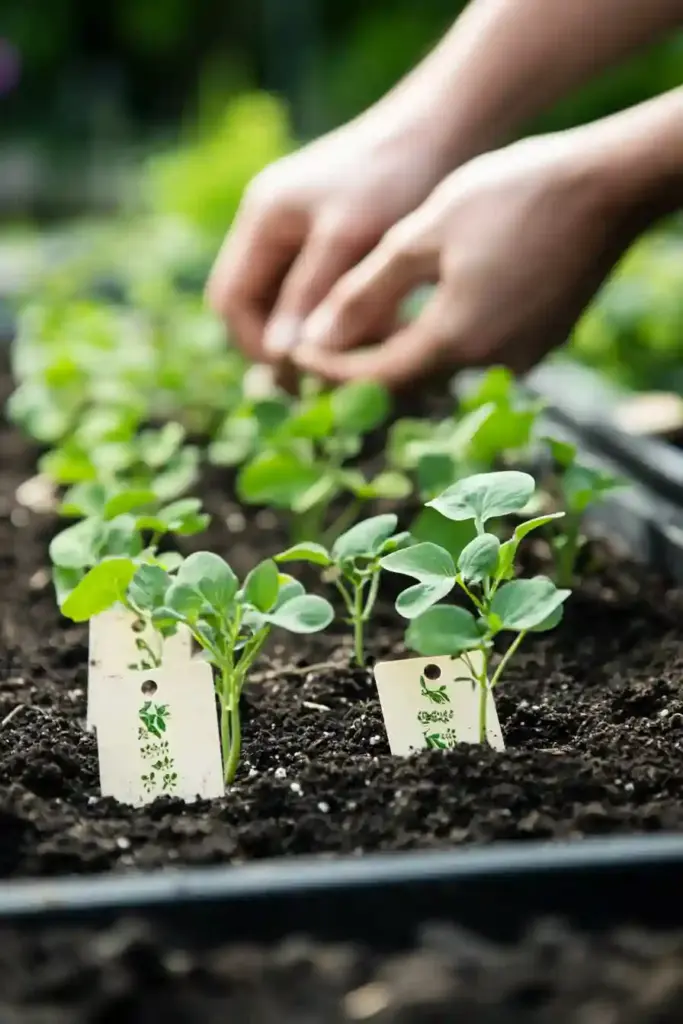
Propagating Spurred Butterfly Pea is a rewarding way to expand your garden naturally. Whether you’re growing it from seed or transplanting an established vine, this plant is quite forgiving when given the right conditions.
🌱 Propagation Methods
There are two common ways to propagate Spurred Butterfly Pea:
1. By Seed
This is the most popular and reliable method.
- Soak seeds in warm water for 12–24 hours before planting to soften the seed coat.
- Sow directly into the garden in spring after the danger of frost has passed.
- Plant seeds about ½ inch deep in moist, well-draining soil.
- Germination typically takes 7 to 14 days.
🌼 Tip: Choose a sunny location from the start since transplanting mature vines can disturb their roots.
2. By Softwood Cuttings
Though less common, cuttings can work in the right conditions.
- Take a 4–6 inch cutting from a healthy vine in late spring or early summer.
- Dip the end in rooting hormone and plant it in a pot with a moist potting mix.
- Keep it in a warm, bright area until roots develop in a few weeks.
🔄 Transplanting Spurred Butterfly Pea
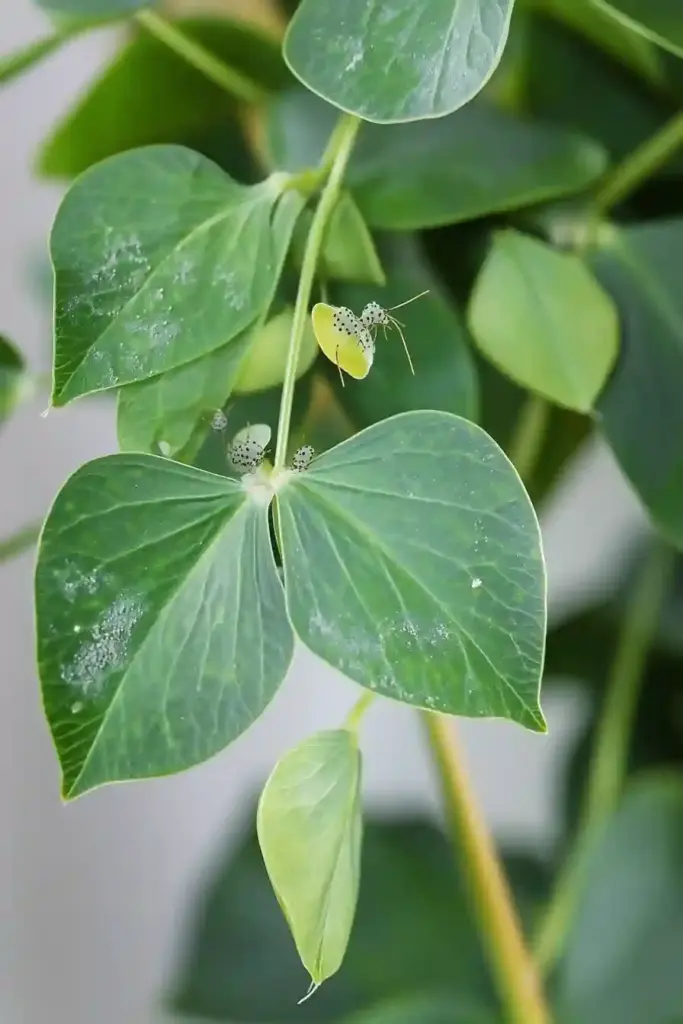
If you started your plant indoors or want to relocate it:
- Transplant in spring or early summer when the soil is warm.
- Choose a sunny spot with good drainage.
- Dig a hole twice the width of the root ball and at the same depth.
- Water thoroughly after planting and mulch to retain moisture.
⚠️ Pro Tip: Be gentle—Spurred Butterfly Pea doesn’t love root disturbance, so avoid transplanting mature plants unless absolutely necessary.
Common Pests and Diseases of Spurred Butterfly Pea

While the Spurred Butterfly Pea is generally low-maintenance and resistant to most issues, like any plant, it can encounter a few common garden pests and diseases. Catching problems early is the key to keeping your vine healthy and thriving.
🐞 Common Pests
1. Aphids
Tiny, sap-sucking insects that cluster on new growth.
- Look for curled leaves and sticky residue (honeydew).
- Control with insecticidal soap or neem oil.
- Introduce ladybugs as natural predators.
2. Spider Mites
These pests thrive in dry conditions and leave fine webs.
- Watch for speckled or yellowing leaves.
- Boost humidity and spray with a strong stream of water to dislodge them.
- Use miticides if infestation is severe.
3. Caterpillars
They can munch on leaves but rarely cause serious harm.
- Handpick caterpillars if few.
- Use organic Bt spray if damage becomes extensive.
🍂 Common Diseases
1. Root Rot
Caused by overwatering or poor drainage.
- Symptoms: Wilting, yellow leaves, mushy roots.
- Prevent with well-drained soil and avoid soggy conditions.
- Remove and discard infected plants if rot sets in.
2. Powdery Mildew
A white, powdery coating on leaves in humid conditions.
- Improve air circulation by spacing plants well.
- Treat with a homemade mix of baking soda and water or commercial fungicides.
🛡️ Good garden hygiene and proper watering go a long way in disease prevention.
Growth Habit and Flowering of Spurred Butterfly Pea
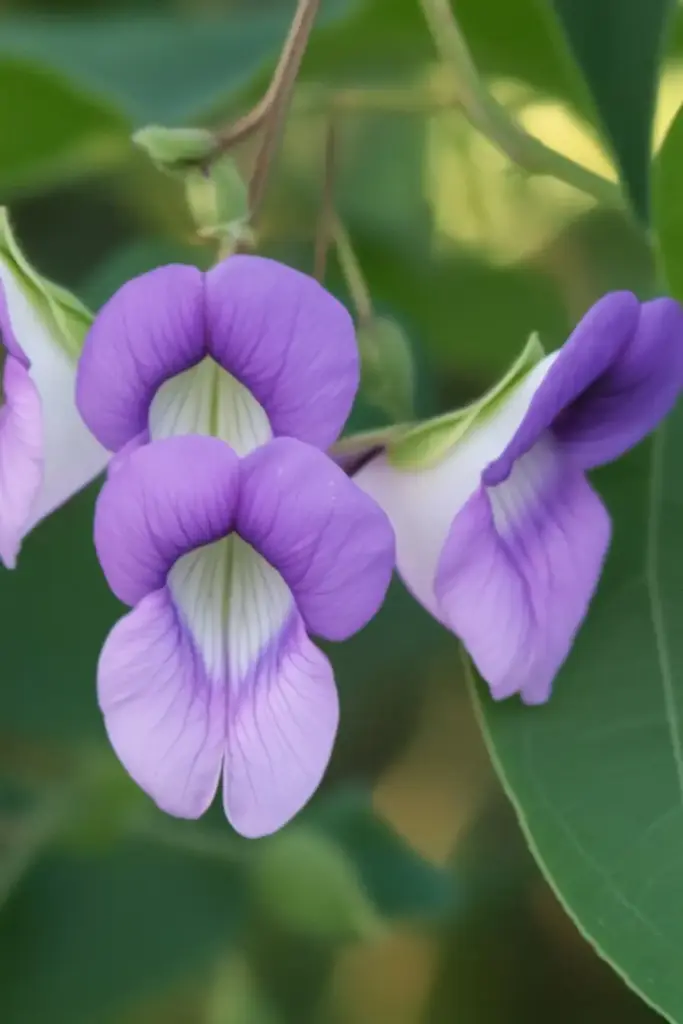
The Spurred Butterfly Pea (Centrosema virginianum) is more than just a pretty flower—its unique growth habits and delicate blooms make it a standout addition to any pollinator or native plant garden.
🌿 Growth Habit
- This herbaceous vine can either sprawl across the ground or climb vertically when given support like a trellis or fence.
- It typically reaches 3 to 6 feet (90–180 cm) in length, though in ideal conditions, it may grow longer.
- With its twining stems and light, airy foliage, it makes an excellent choice for softening hard edges in your landscape.
🧬 Bonus: It’s part of the Fabaceae family, which means it helps fix nitrogen in the soil, improving the health of nearby plants.
🌸 Flowering Characteristics
- The blooms are striking, usually a vibrant purplish-blue, and shaped like a butterfly’s wings—hence the name.
- Flowers appear from late spring through summer, attracting bees, butterflies, and other pollinators.
- Each flower is made up of a standard petal, wings, and a keel—classic features of legumes.
✨ Aesthetically charming and ecologically beneficial? Yes, please!
🌱 Root System
- Spurred Butterfly Pea has a strong root system with nodules, which are responsible for nitrogen fixation.
- This root behavior makes it a great companion in permaculture gardens or areas where soil needs natural enrichment.
Final Thoughts on Growing Spurred Butterfly Pea
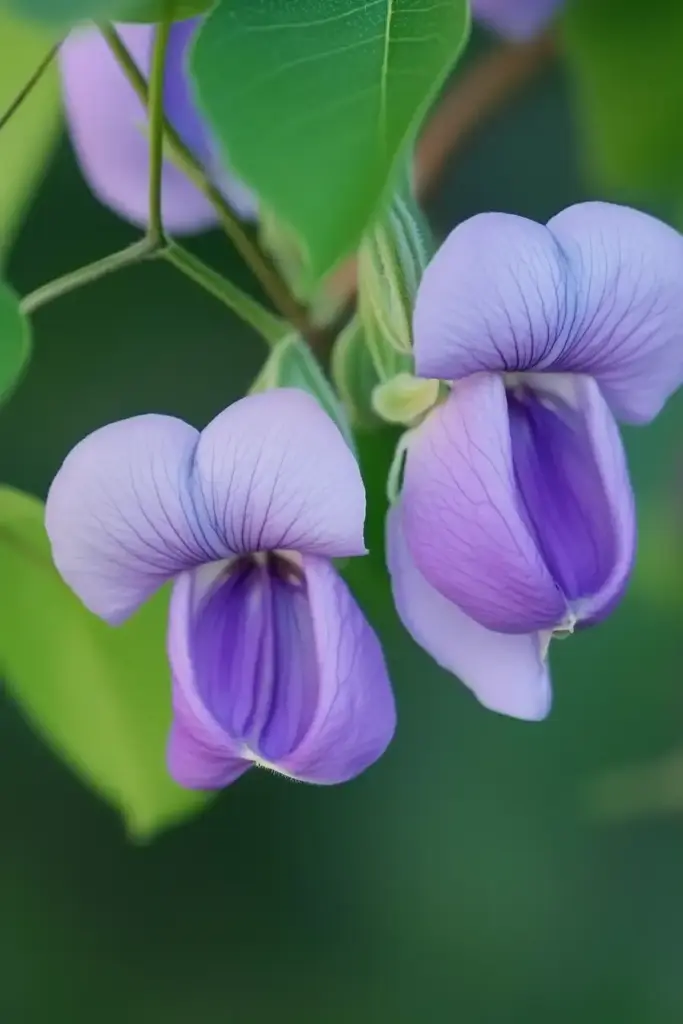
Spurred Butterfly Pea (Centrosema virginianum) is a rewarding plant to grow whether you’re a seasoned gardener or just starting out. Its vibrant blooms, climbing habit, and ability to enrich the soil make it a standout in pollinator gardens, native plant beds, and even containers—pair it with our 11 Patio Planter Ideas for inspired container displays, or integrate it into 15 Flower Bed Ideas to Transform Your Front Yard to boost nectar sources. For sun-drenched spots, blend it alongside selections from our 11 Drought-Tolerant Shrubs for Full Sun to create a low-maintenance, high-impact border.
Spurred Butterfly Pea thrives with just a little sun, well-drained soil, and occasional pruning—making it a perfect fit for adding vertical interest to any of your 18 Beautiful Patio Plants That Will Turn Your Space into a Lush Oasis!. This low-maintenance perennial will bring beauty and biodiversity to your outdoor space season after season.
💚 Plant it once, enjoy it for years.

